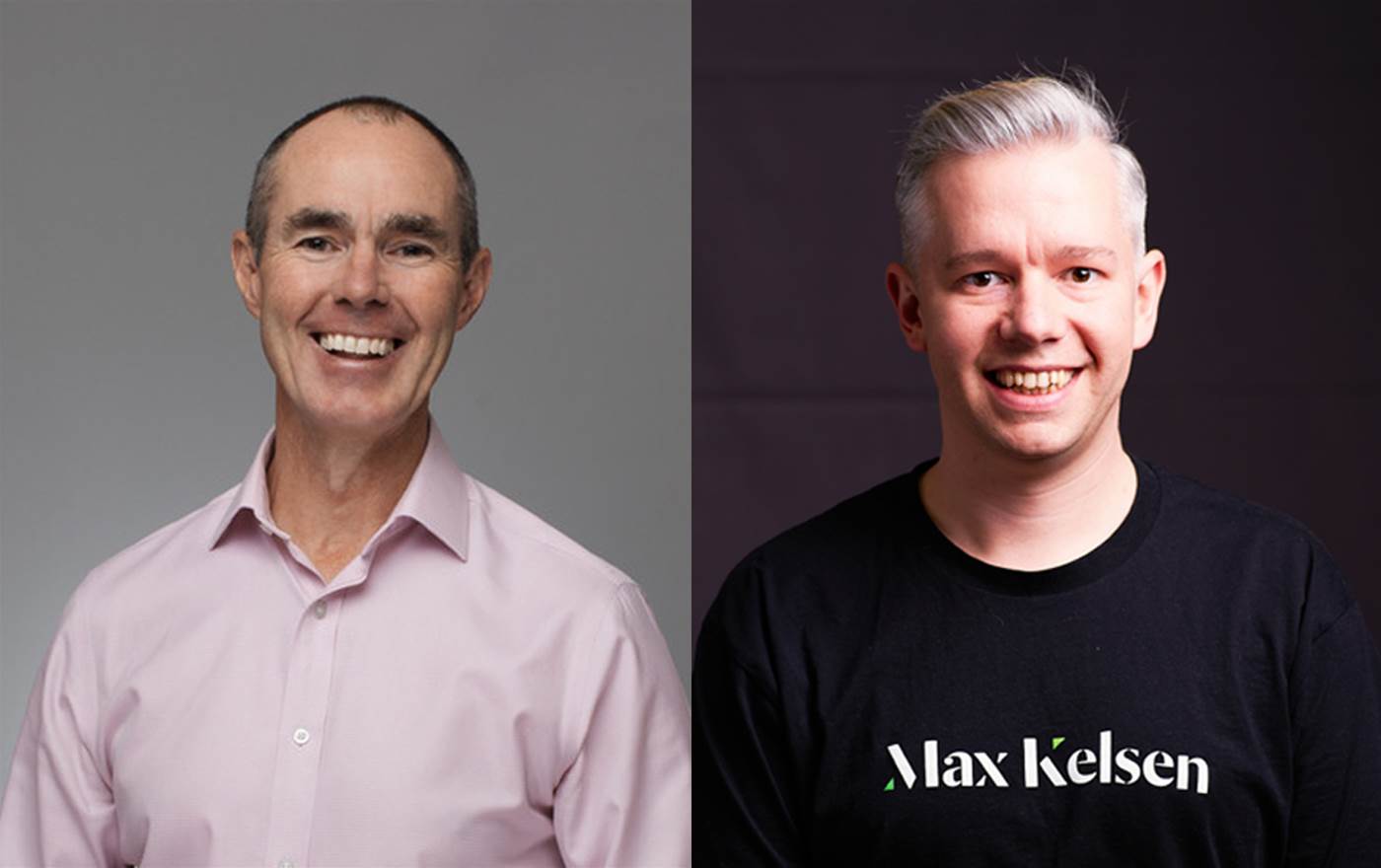The Government recently released its national AI Action Plan (pdf) that promises $124.1 million toward the development of artificial intelligence technologies which has been praised by local industry experts.
The aim is for the Australian economy to take a share of what the document claims is a $20 trillion global opportunity.
“Australia’s AI Action Plan sets out the Australian Government’s path forward to ensure we responsibly leverage AI to further strengthen our economy and lift the quality of life for all Australians,” the Minister’s foreword read.
To better understand this plan and what it means for IT providers, CRN spoke with AI specialist firm Max Kelsen’s chief executive and head of the Queensland AI Hub Nicholas Therkelsen-Terry, and to digital technologies consultancy Lab3’s Federal Government director Reuben Bettle.

General impressions
Both experts were optimistic both simply because a plan has been made, but also because that plan includes specific dollar amounts pledged for specific goals.
“Firstly, recognising the immense opportunity and making targeted investment is a great step forward. For Australian companies, like Lab3, putting technology and specifically AI high on the agenda is a really meaningful step,” Bettle said of the Action Plan as a whole.
Therkelsen-Terry said, “First, for me, [previous Minister for Industry, Innovation and Science] Karen Andrews obviously spent a lot of time consulting with the industry and listening to industry and the research sector and others, and has come up with a plan that covers a number of the really key pain points.
“A number of technology roadmaps have been released over the years, and quite a few of those have come without sufficient budgetary backing to really make a difference. The government has actually put money behind these initiatives and that is, to me, a very good outcome, because it will mean that these things actually come to fruition.”
However, from a critical perspective, Therkelsen-Terry noted that there could have been more focus on commercialisation.
“There is a lot of focus on the research sector in the document, Data61, CSIRO, research organisations etc. Maybe not as much focus as we would have liked on industry. AI technology today has really hit the point that it's about building and implementing.
“There is a lot of research to be done, but … unless there is a focus on industry, and the commercialisation and translation of research into commercial outcomes for our existing industries and new industries, then I think that we won't see the results that we would like to see.”
National AI Centre and four Digital Capability Centres
A total of $53.8 million has been committed to opening a National AI Centre and four specific Digital Capability Centres that will “coordinate the nation’s AI expertise and capabilities, and foster greater collaboration between industry and research institutions,” according to a statement from the office of the Minister for Industry, Science and Technology.
“The ... Centres represent a commitment to collaboration which is vital if we’re going to accelerate capability and capacity in Australia,” Bettle stated.
“Bringing government, industry and technologists together to advance in really practical ways is vital. A key objective has to be bringing AI to life – to the field – so it’s encouraging to see the focus on increasing awareness and particularly on commercialisation.”
Thekelson described the Centres as “a great initiative, a really good part of the program.”
“There needs to be a way for the industry to show to policymakers, government, the global economy what's happening here in Australia and I think that these sort of centres do a really good job of being advocates for the industry and showing off what it's doing, as well as then being ways to bring connected business into the local industry, connect skills into the local industry, and so on.”
He sees the four smaller centres particularly as a great opportunity to expand on what we are already good at.
“What I would imagine they will do is look to align those with the natural capabilities in particular states. So it might be that they focus the capability centre for healthcare in Victoria, and for resources in mining in Queensland. However they decide to break that up, by having more than one of them, there's a recognition that there are different pockets and different things going on, and that there's not one place in Australia doing AI.”

AI to the regions
A portion of the total ($12 million) is going toward competitive grants for companies who work with companies in the regions to create AI solutions for their challenges.
As Therkelsen-Terry noted, the amount seems relatively small as “just in agriculture you could spend 12 million dollars and it would be a drop in the ocean.”
But he added, “I would hope that the vision is for that money to very much work with existing pools of money in different technology verticals that come together to provide solutions for the region.
“Very rarely will it be in a pure AI play, there will be interactions, both with those industry specific funding bodies and with other bodies. It is a relatively small amount of money but I think that there's a lot of other money out there that it can attach itself to and amplify its impact.”
Similarly, Bettle pointed to a recent project that Lab3 worked on where, in conjunction with La Trobe University, they developed an IoT system for AgBioEn for crop testing.
“It’s worth noting that we’ve been able to leverage the R&D Tax Incentive to bring that project to life. The reality is that there’s huge potential in regional settings for AI to make a material impact to uplift efficiencies, scale and quality. Bringing AI to the field, literally, turns the theoretical into the practical quick smart … The grant funding will definitely assist with that.”
Skills and talent
There is no shortage of discussion about the lack of experienced developers for new and emerging technologies in this country. The private and public sectors are both launching numerous programs to upskill and reskill people to meet this dearth of talent.
The Action Plan pledges $24.7 million for an AI Graduates Program as part of the new investment. It also references the Global Business and Talent Attraction Taskforce and the $42.4 million that is currently provided for Women In STEM scholarships, co-funded by industry.
Bettle stated that the most important aspect of the new scholarships is “Making sure that talent is job-ready,” and added that he would like to see further support for industry-led programs.
“We’ve recently launched our Graduate program … so we would like to see more specific commitments to programs like ours which are already in flight. This would enable us, and our industry partners, to scale talent in an economically sustainable manner.”
Therkelsen-Terry said that he was “very happy to see the inclusion of the Global Talent Taskforce.”
He noted that while there is great talent coming out of local universities, having experienced experts to act as mentors to new graduates is vital and that is where we find the biggest gap.
“Our challenge right now is that we don't have enough of that senior experience talent. We need a way to ensure that we bring some of that into Australia and some of that thinking and knowledge and experience into Australia so that we can better mentor and grow our young people. And that I think that the global talent taskforce piece of that equation makes a lot of sense.”

Diversity
While the document goes into detail about how it is addressing the gender gap, its conversation about diversity begins and ends there.
Bias in AI is a huge topic, as a simple web search will reveal, and almost any discussion of a solution ultimately comes back to diversity in the teams that create AI and ML programs.
To Therkelsen-Terry, this is something that should be addressed in Australia.
“When you talk about making technology that affects people's lives, which a lot of AI has been, in financial services and healthcare, then diversity of the people creating that technology ensures inclusion and fairness in that technology.
“The representation of women in STEM in Australia is, let's be honest, atrocious and we have to do a lot better there. I somewhat think that becomes the overriding narrative because it is such a big problem, but that doesn't stop us working on the others and having a conversation about the others.
“It’s almost more important to get it right in AI than it is in other areas of STEM, because AI technology generally makes more decisions about people and their lives. And so the increase in fairness that comes from a diverse group of people working on those problems, means, hopefully, theoretically, that the systems that get built are more inclusive and fairer to different types of people.”
AI Ethics
Further to the responsibility of those developing AI solutions, the document affirmed the Government’s commitment to the responsible application of AI tech by highlighting Australia’s Eight AI Ethics Principles.
These principles are, as described in the framework, “voluntary” and “aspirational”, though projects that the Government funds or co-funds will be expected to align with these principles.
Bettle noted that while “boundaries will be challenged” as AI tech continues to rapidly develop, within Lab3, the principles “help us stay grounded when we consider not just the benefits, but also possible consequences of applying AI.”
“In Australia, we’ve already seen some pretty significant impacts on individuals where the impact, change and communication aspects of applying AI have not been sufficiently thought through … The real test will come when the benefits appear to be self-evident but the consequences are not yet clearly understood or well defined.”
Therkelsen-Terry said, “At a very high, 100,000-foot view of the world, as a set of principles, it's a good set of principles and it's a relatively achievable set of principles.”
What he said is missing from the framework is guidance for how to get from that high-level into the actual application during the development of systems.
“Somewhere somewhere between ‘the system should be reliable and safe’ and the 1000s upon 1000s of pages of academic research and what they actually mean, there needs to be a middle ground where we are saying ‘this is what we consider reliable and safe AI system, and this is how to confirm that they're reliable and safe, and these are the standards that we expect you to meet.’
He added that we should "give people the tools to make sure that what they're building or what they're buying, based on the risk of the thing that they're doing, meets the standards that we as a nation would expect that that system reaches.
“I would assert that very, very, very few AI programmers at the moment are looking at this list going ‘do we meet those?’ There are those who ask ‘do we meet best practice?’ and so on and so forth, but I'm not sure that as yet it has jumped the divide into affecting everyday decision making about how to use AI, and that's what we've got to do otherwise they’re not worth the paper they're written on.”

Final thoughts
It is worth reiterating that both Lab3’s Reuben Bettle and Max Kelsen’s Nicholas Therkelsen-Terry were generally positive about the contents of the Action Plan.
Bettle said he believes that the plan will promote understanding of AI tech, which will lead to a greater uptake in all areas.
“One of the key benefits of the overall plan will be to demystify and broadly increase the awareness and acceptance of the use of AI. In keeping with the ethical principles, we clearly want to ensure the use of AI leads to better outcomes for all Australians, citizens and businesses alike but it has to be used in a safe, reliable and fair way.
“In a business context, this should translate to a willingness to commit to more substantial and meaningful programs of work rather than short-term experiments and trials, again on the proviso that this is being done within the guardrails provided by the ethical principles.”
Therkelsen-Terry commends the level of engagement with the AI ecosystem that shows through in the plan, as well as the fact that “we did see a lot more money put forward than has ever been put forward before – we can't ask for much more than that.”
However, he does have a word of warning about what he calls “a small amount of hubris in the language.”
“We actually need to recognise that we're not the global leader in AI that we would want to be and that we've got some catching up to do. We should own that, we should say that's something that we've got to do. Canada, the US, Israel, and China are miles and miles ahead in research, implementation, government funding, etc. If you don't accept the fundamentals, it's hard to create a plan away from those. If we kid ourselves that we're not, then we might make bad decisions.
“Australia will have places that it plays in that it is a global leader in, for sure. Whether that's medtech, biotech, healthcare or whether that's in agriculture or mining – these are areas that we have an existing global advantage team and global footprint in and they're the areas that we should be looking to align.”
But on the whole, “Yes, there are certainly things that can be done better but this is a huge step in the right direction.”




.png&h=142&w=230&c=1&s=1)


.jpg&h=142&w=230&c=1&s=1)




.jpg&w=100&c=1&s=0)
_(8).jpg&w=100&c=1&s=0)










